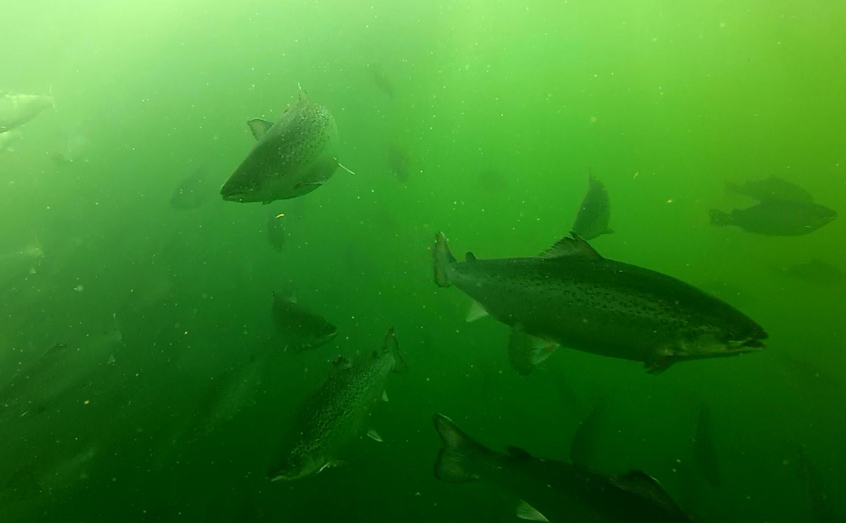SAMS news room
No link between salmon farming and harmful algae blooms

Marine scientists investigating the formation of harmful algal blooms (HABs) in Scottish waters have found no link between salmon farming and the likelihood of a bloom forming.
Such blooms can have devastating effects on aquaculture sites. Humans eating shellfish that have absorbed these toxic phytoplankton can become ill and blooms can also be fatal to farmed fish.
In a paper published in the journal Harmful Algae, researchers from the Scottish Association for Marine Science (SAMS) in Oban concluded that farmed salmon biomass alone had no significant effect on cell abundance of any of the studied phytoplankton.
Prof Keith Davidson, a co-author on the paper said: “It would be a reasonable assumption to make that excess nutrients from fish farms could have the potential to ‘feed’ nearby phytoplankton, increasing their abundance and, therefore, an intensification of HABs.
“However, our mathematical model-based analysis indicated that farmed salmon biomass had a non-significant effect on cell abundance of any of the studied phytoplankton taxa. In contrast, location or time of the year had a much greater influence on cell abundance.
“Overall, the analyses suggest that current levels of salmon farming activities do not markedly impact the abundance of routinely monitored biotoxin producing or fish killing phytoplankton taxa in Scottish waters.”
The findings came partly from the analysis of data from the Food Standards Scotland regulatory biotoxin monitoring programme that has generated weekly harmful phytoplankton reports from a range of locations around the Scottish coast, stretching back 15 years.
The paper’s lead author Dr Fatima Gianella said: “A possible explanation for the lack of a significant relationship between farmed salmon and harmful phytoplankton cell abundance is that aquaculture farms are generally located in hydrodynamically energetic locations where recurrent flushing likely allows efficient dilution of nutrients.”
The research team examined blooms among the algal species that most frequently impacted shellfish farms and human health in the region: Dinophysis spp., Alexandrium spp. and Pseudo-nitzschia spp. and studied the cell abundance of one phytoplankton species of particular concern to the salmon farming industry (Karenia mikimotoi).
The paper “The relationship between salmon (Salmo salar) farming and cell abundance of harmful algal taxa” is available to view here: https://doi.org/10.1016/j.hal.2023.102512
